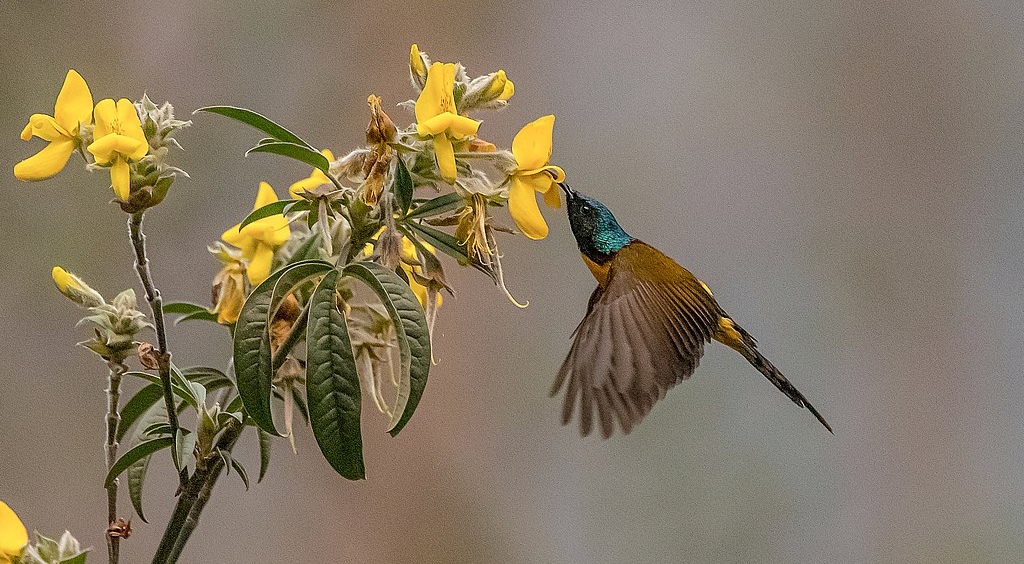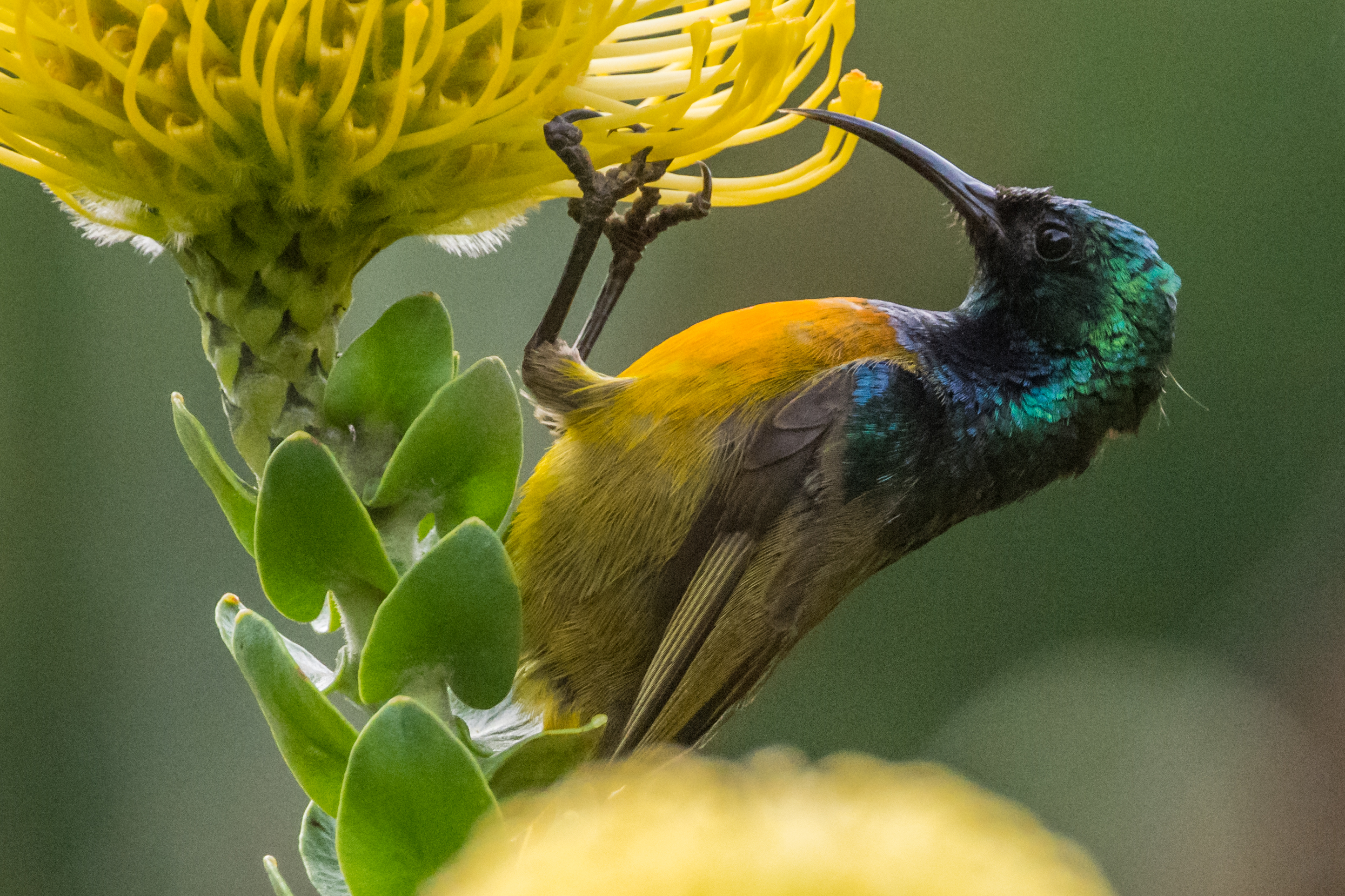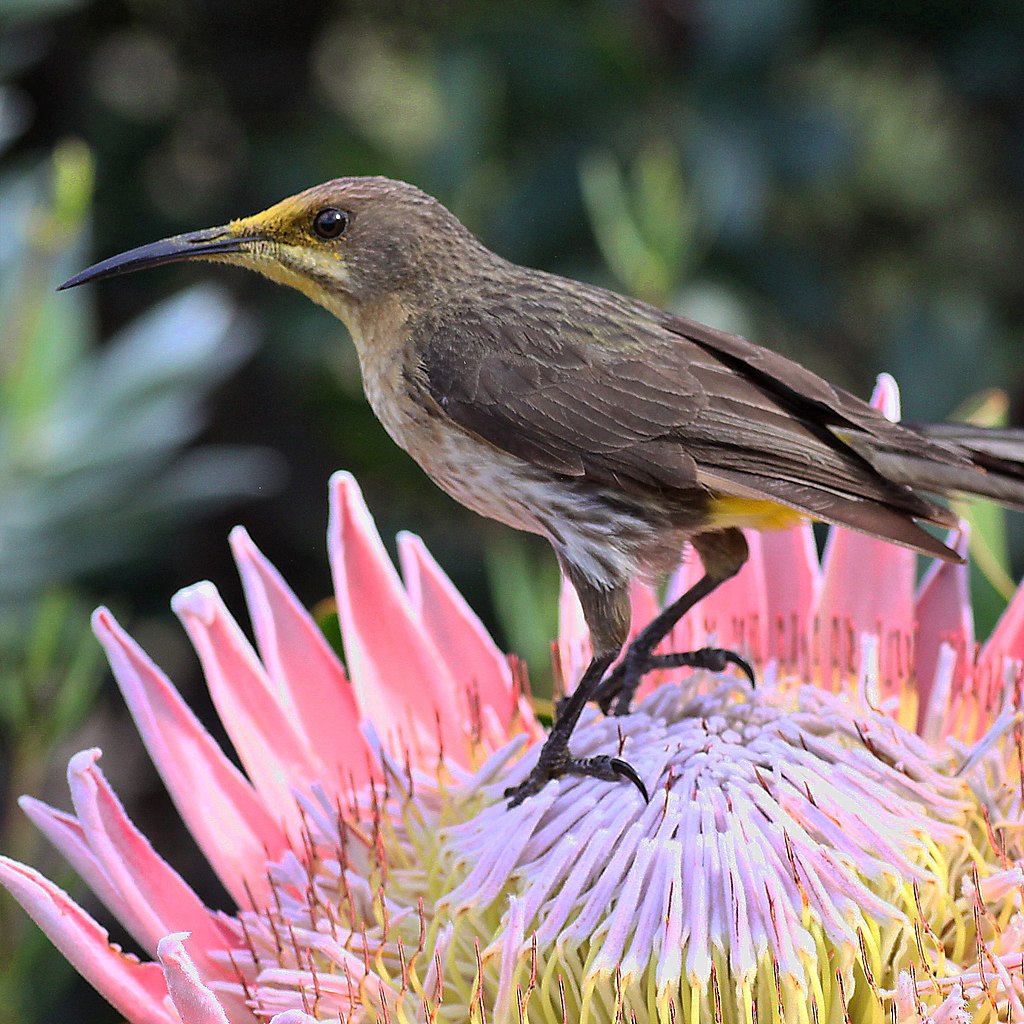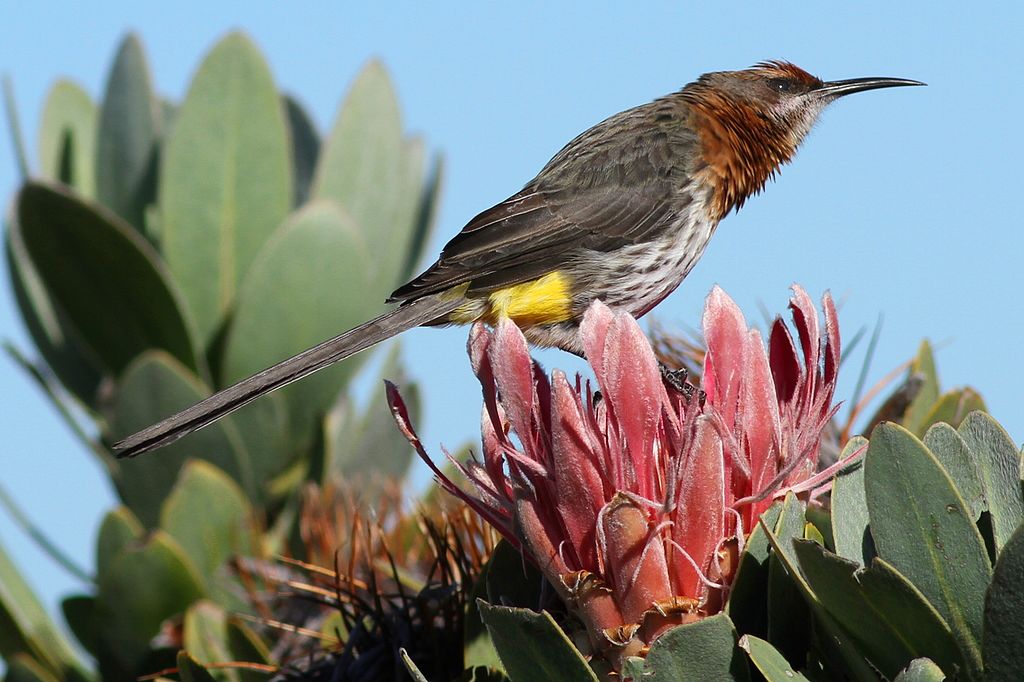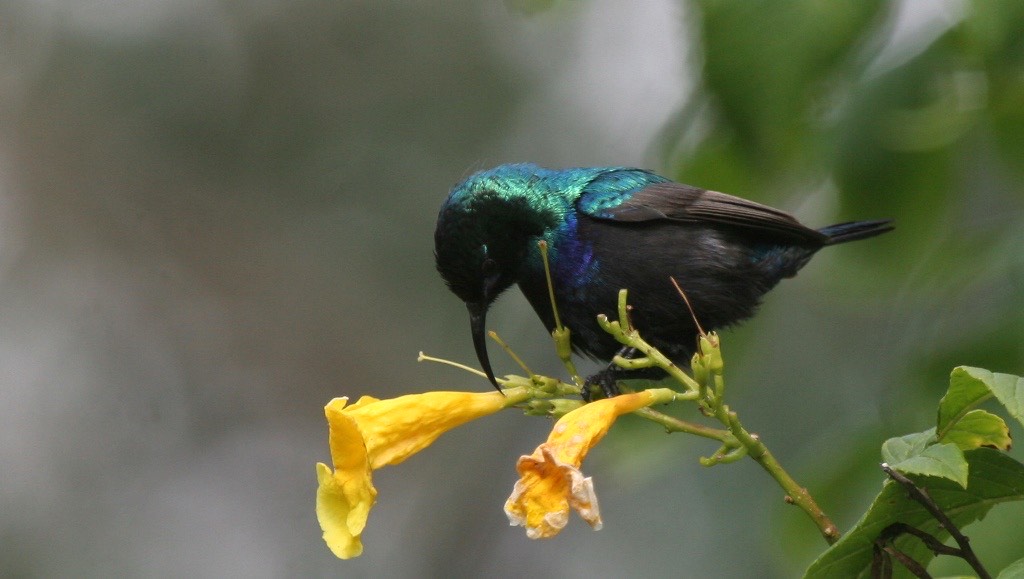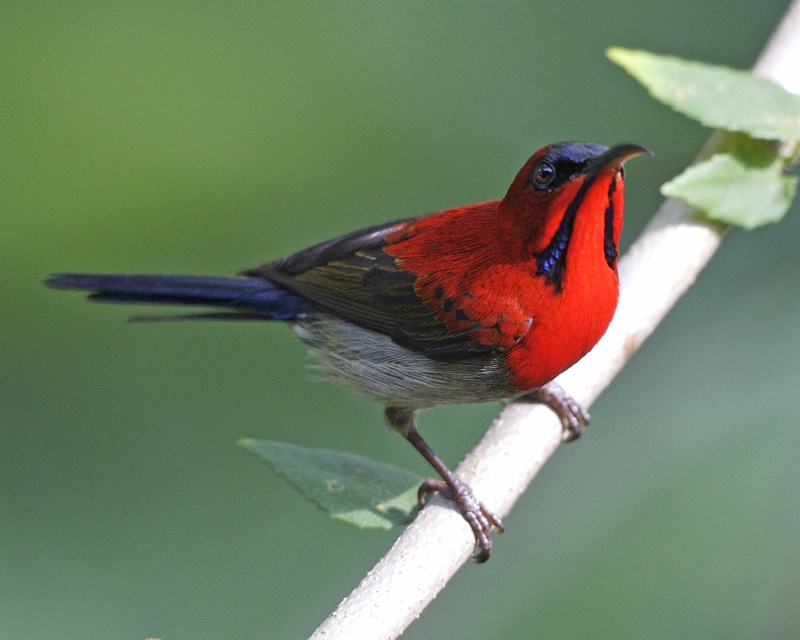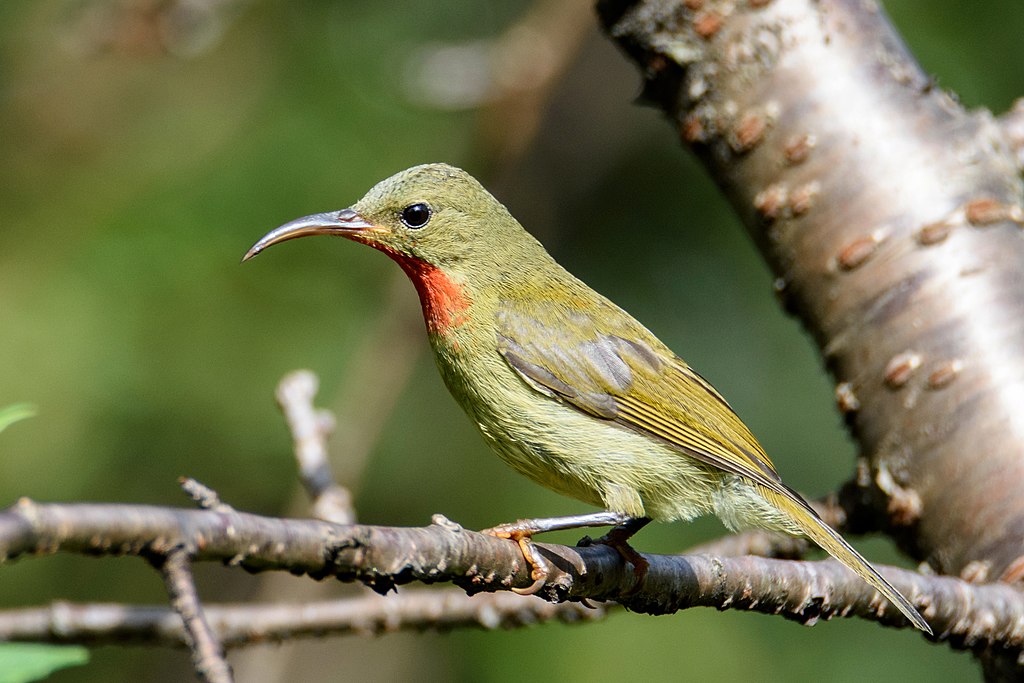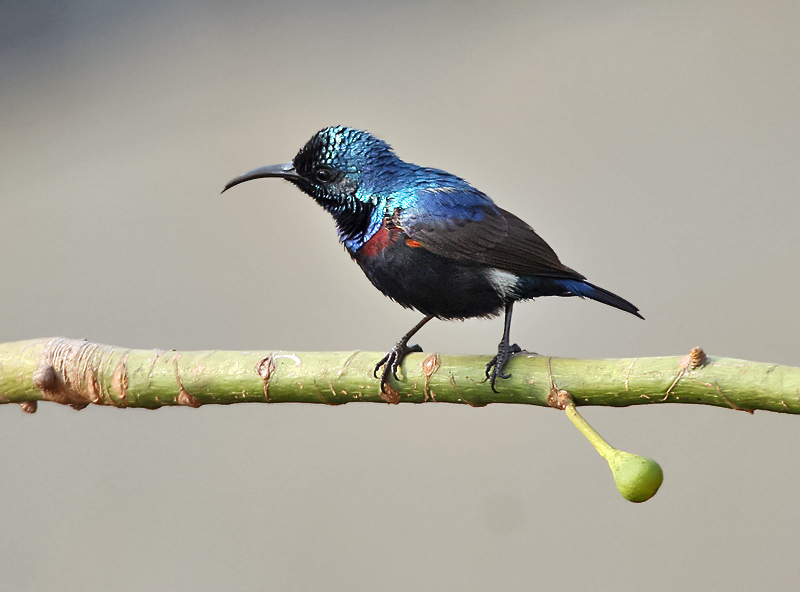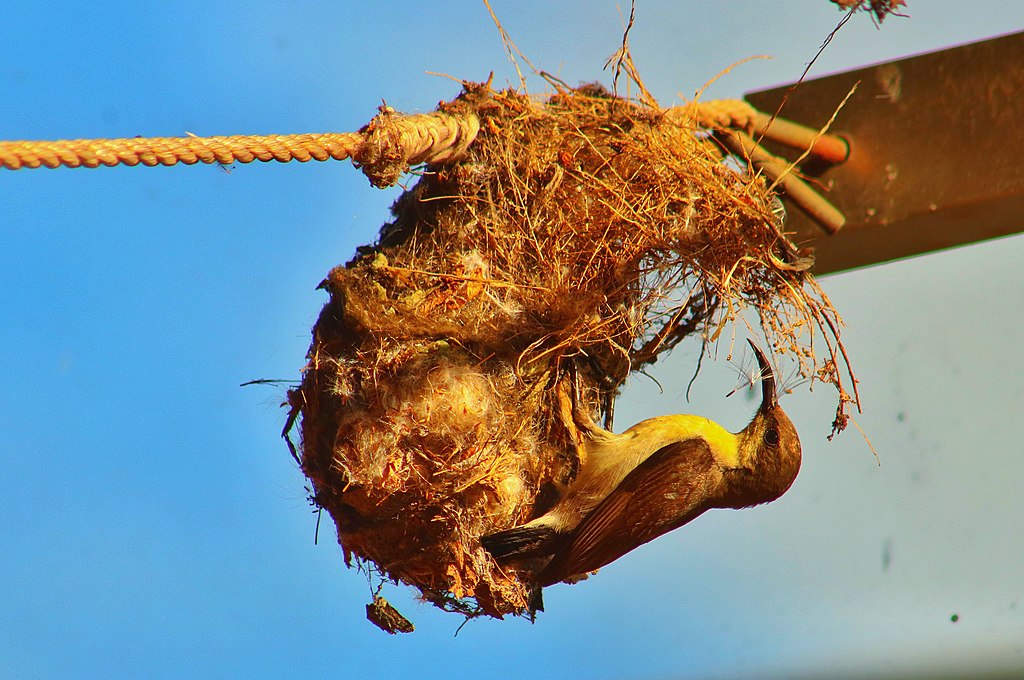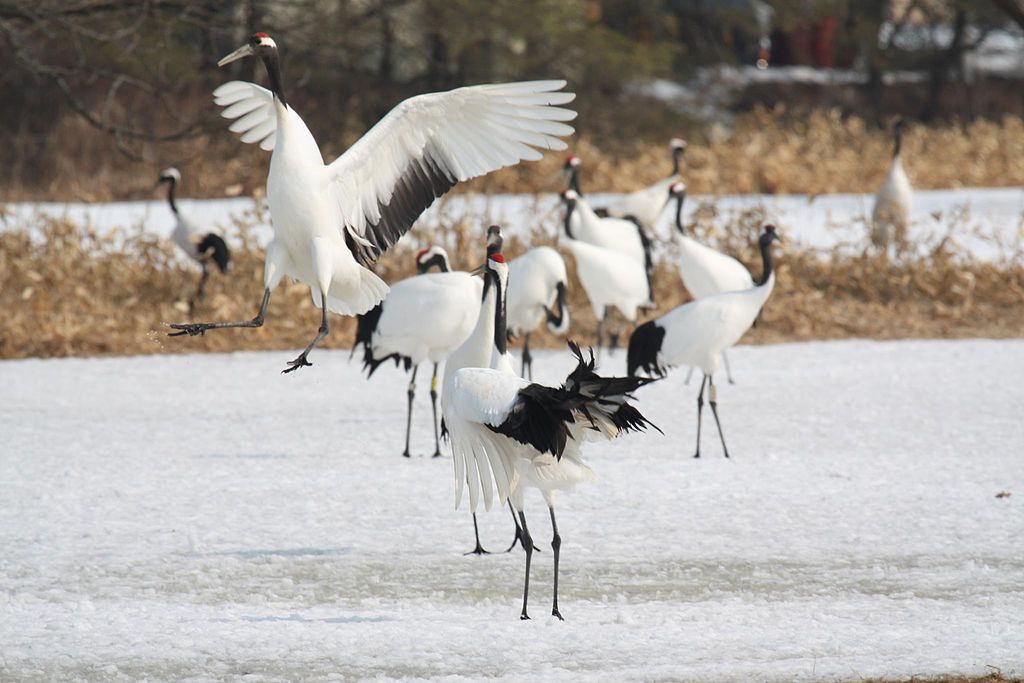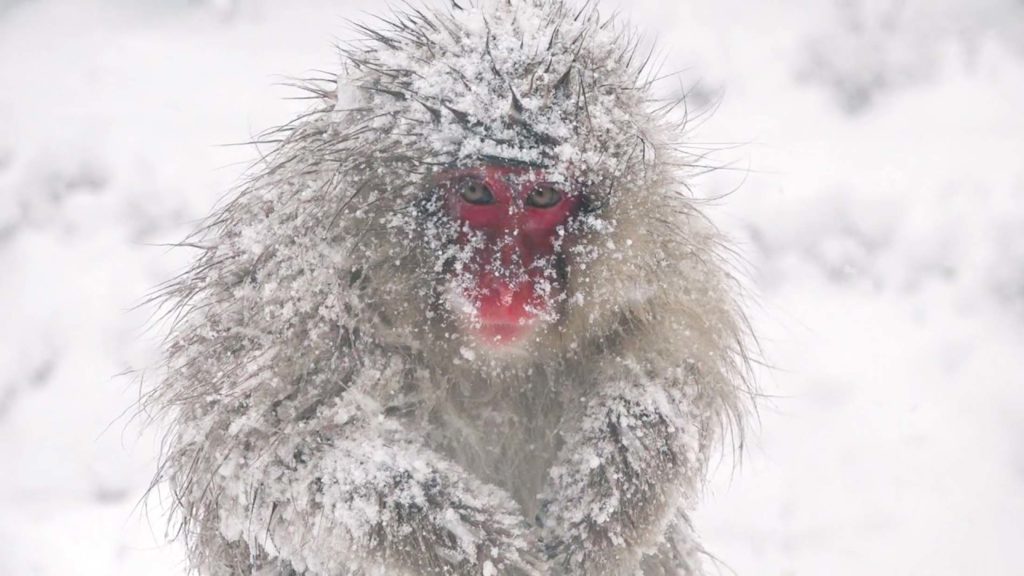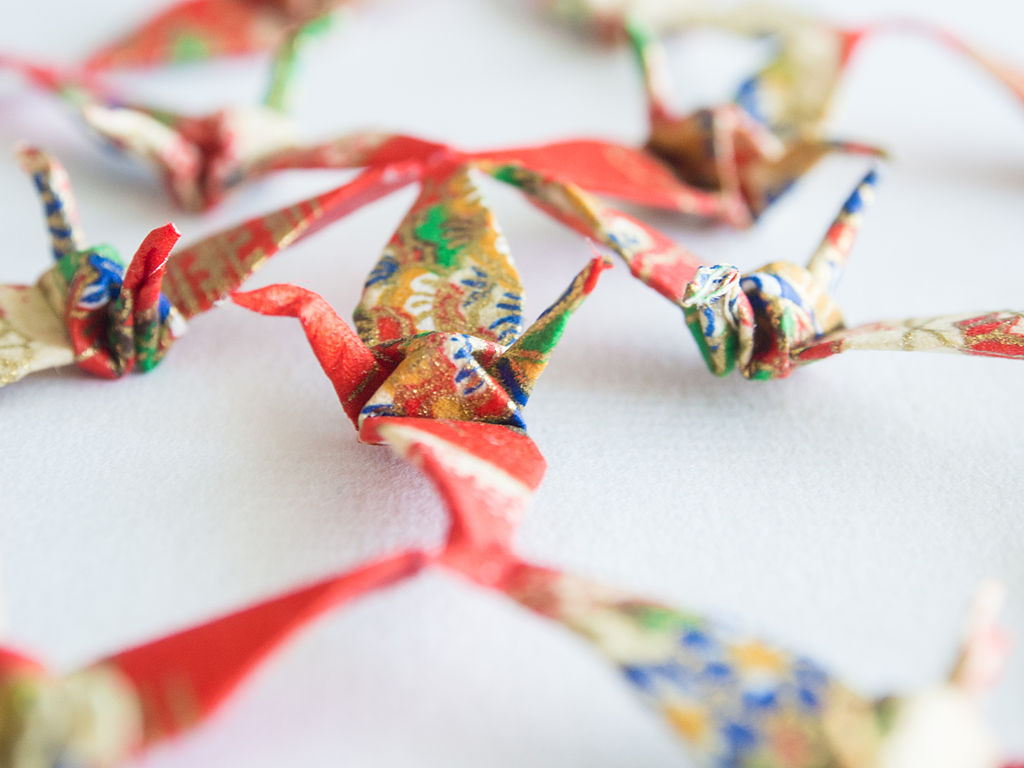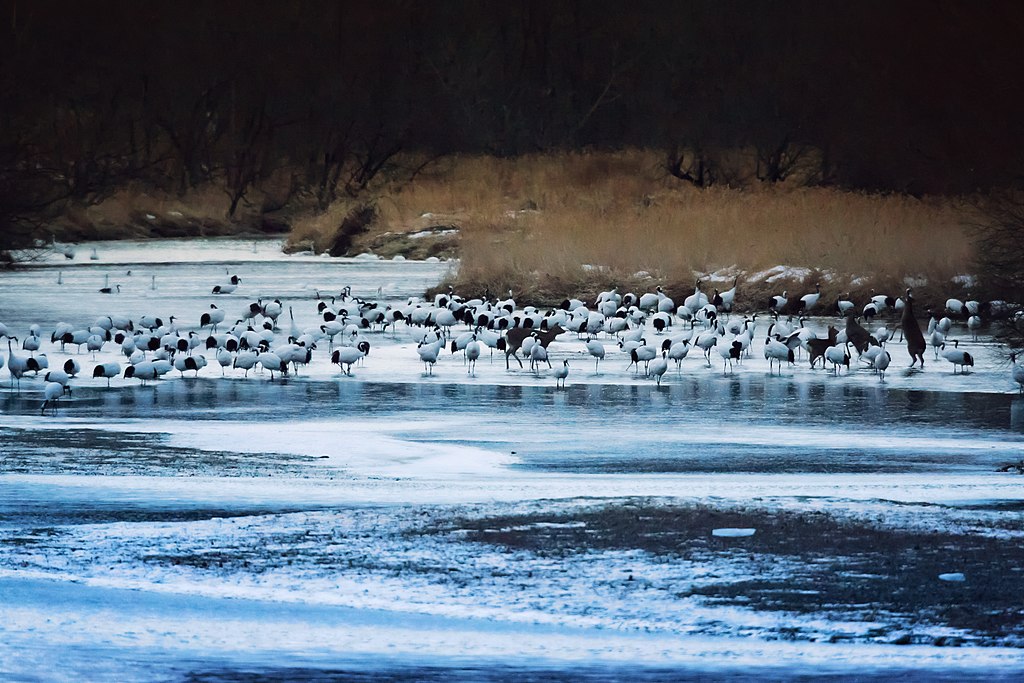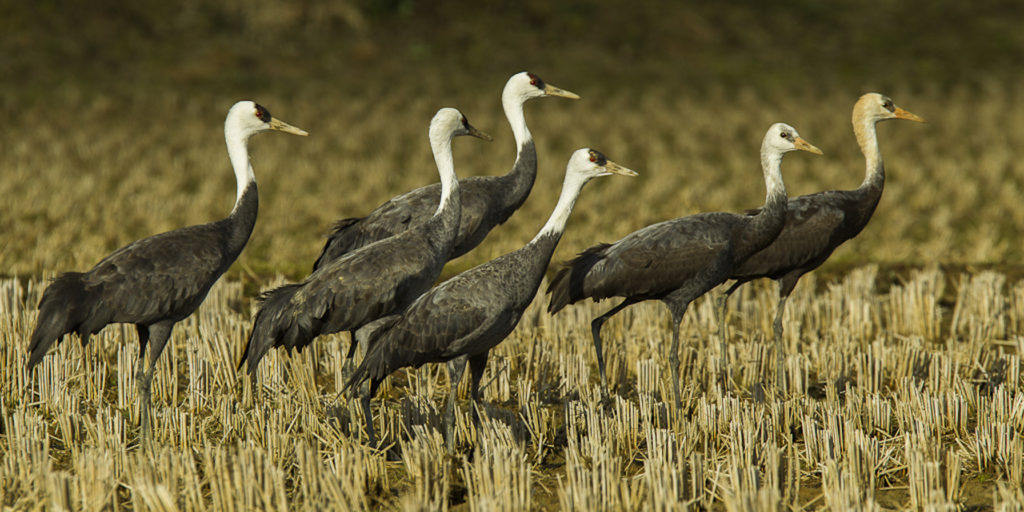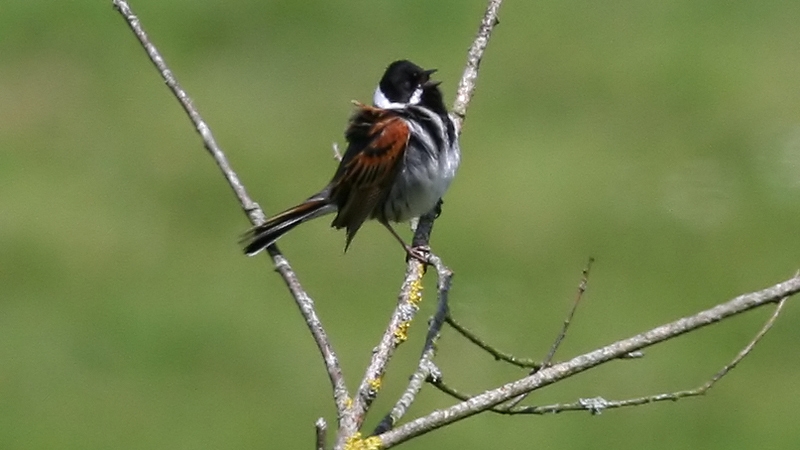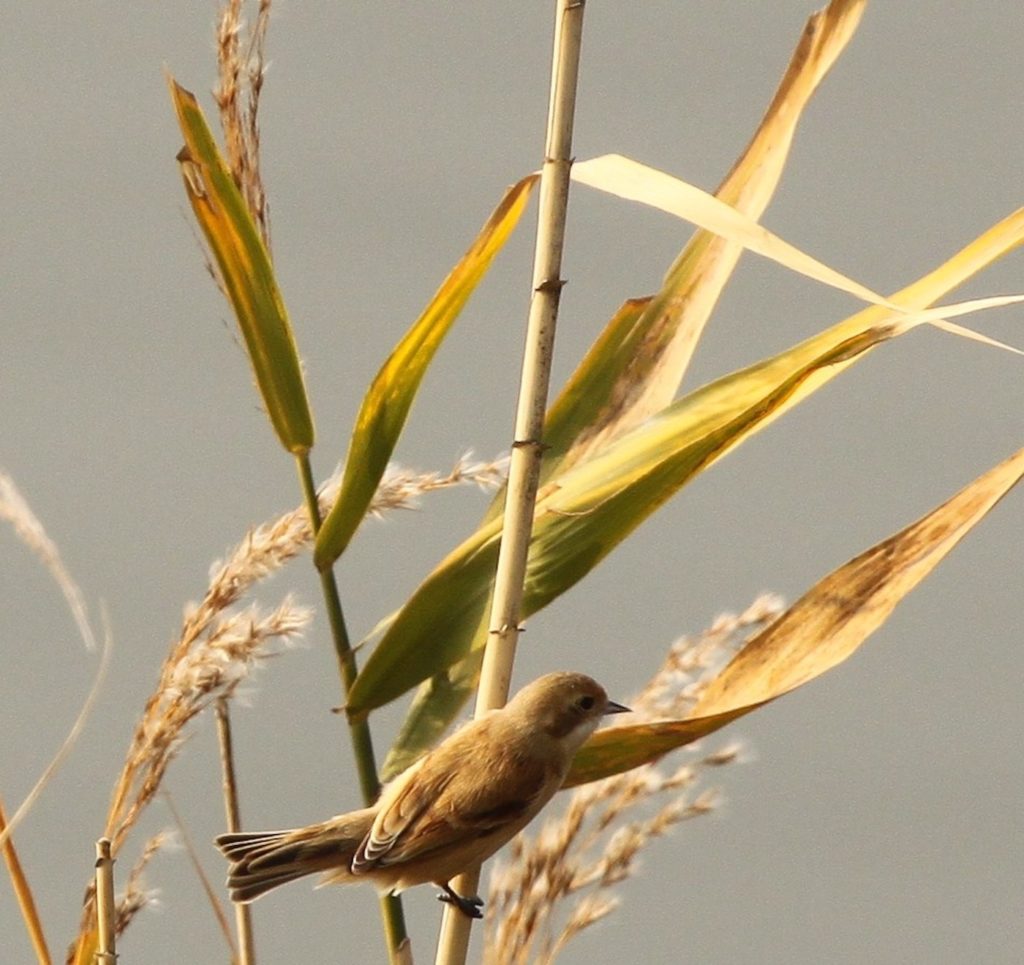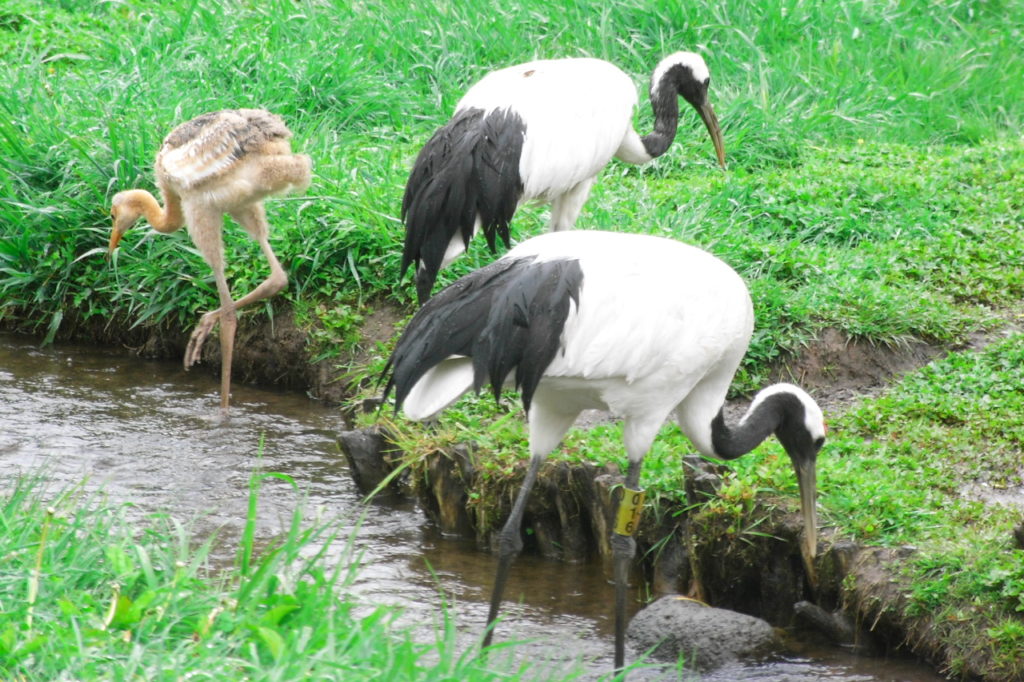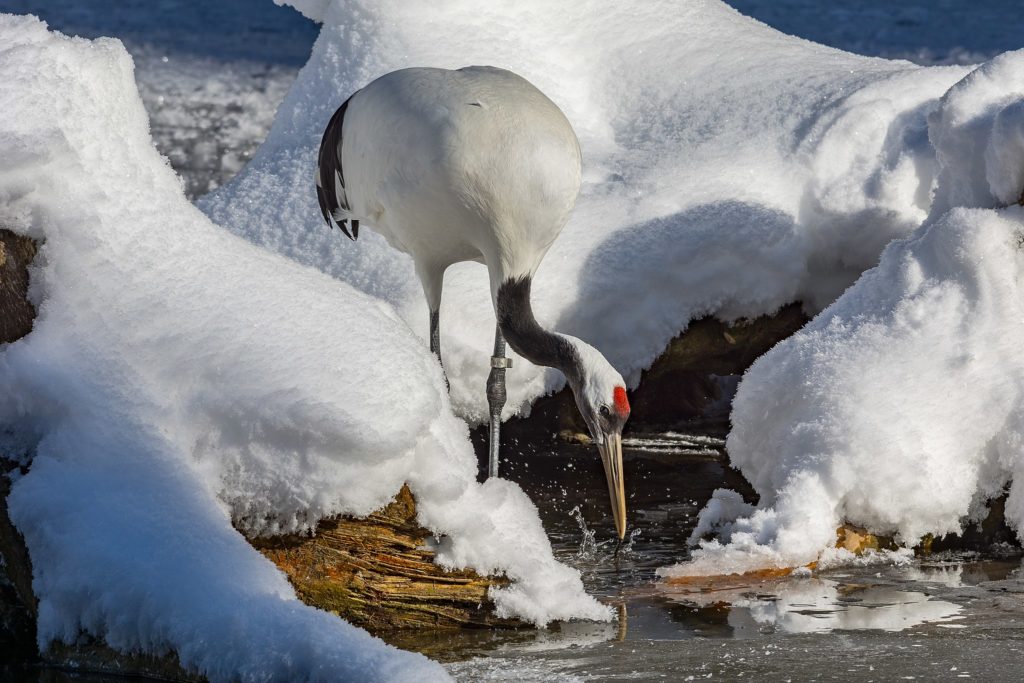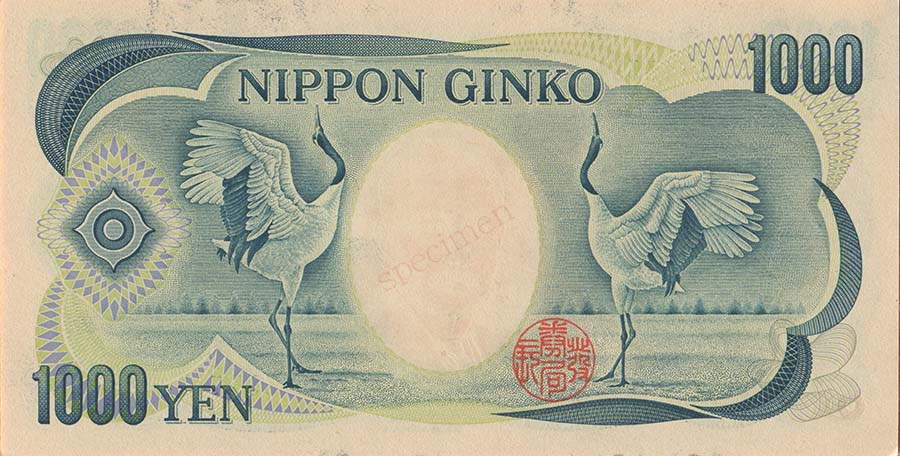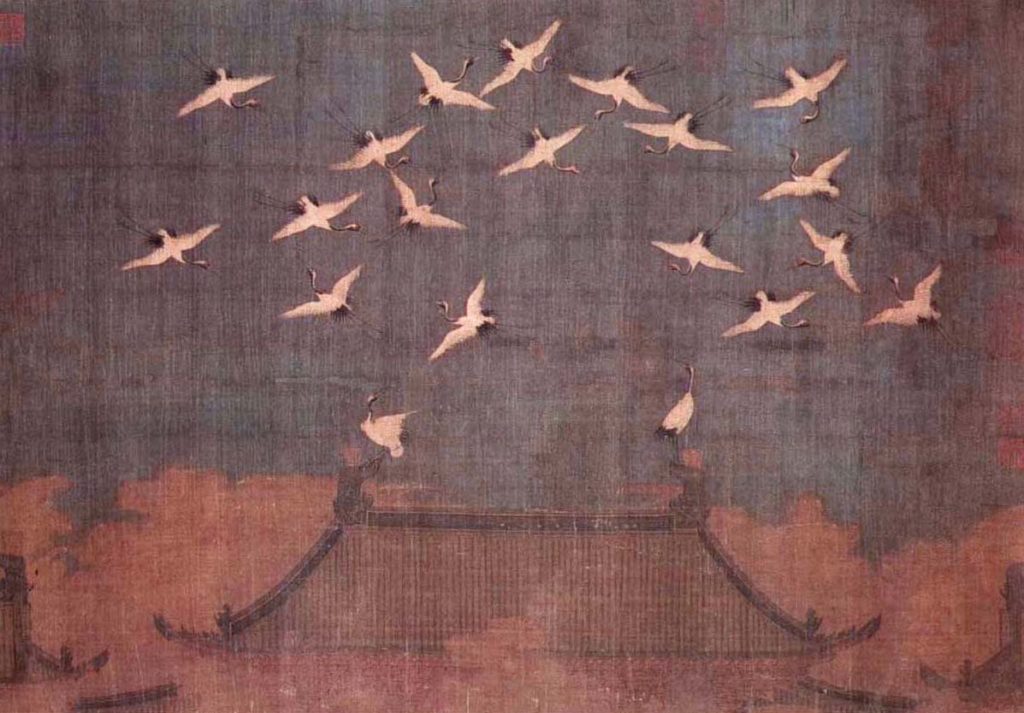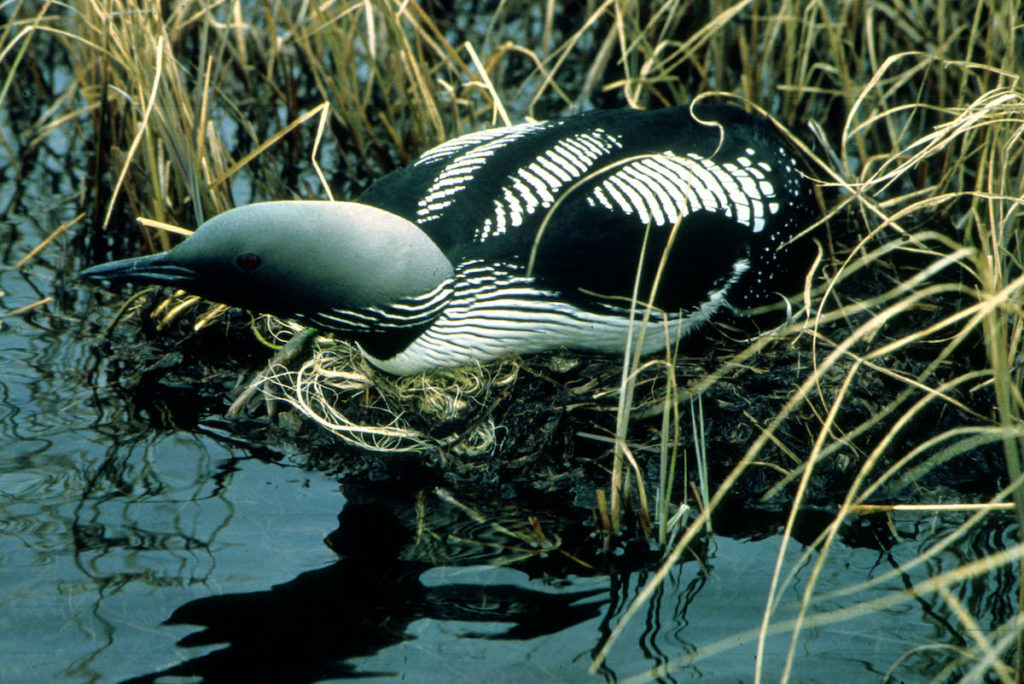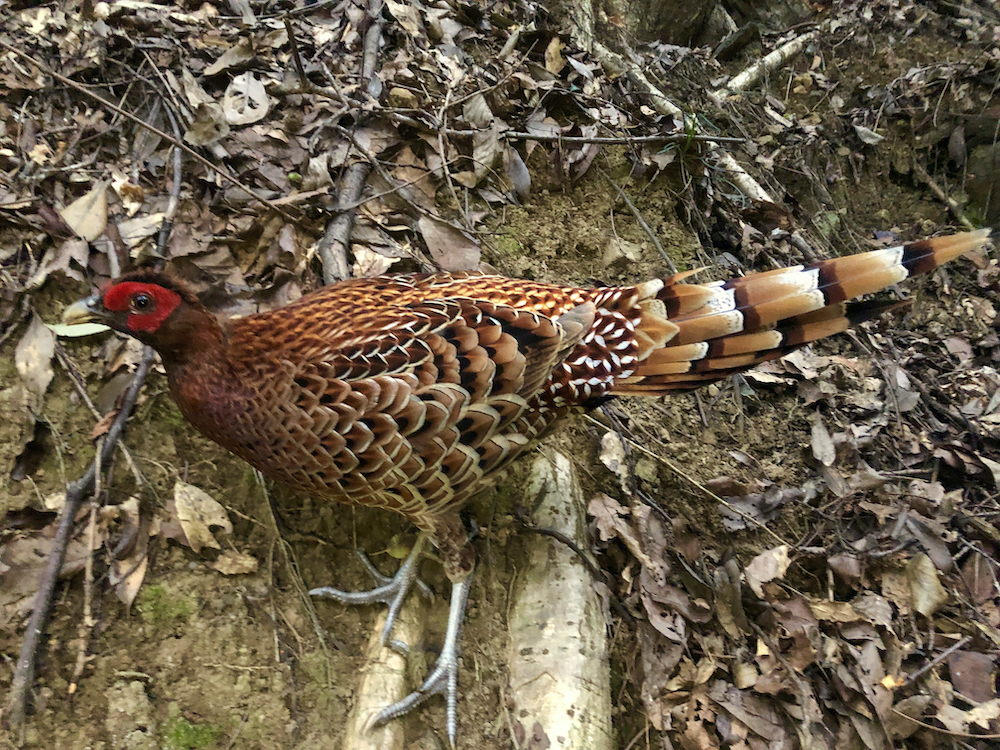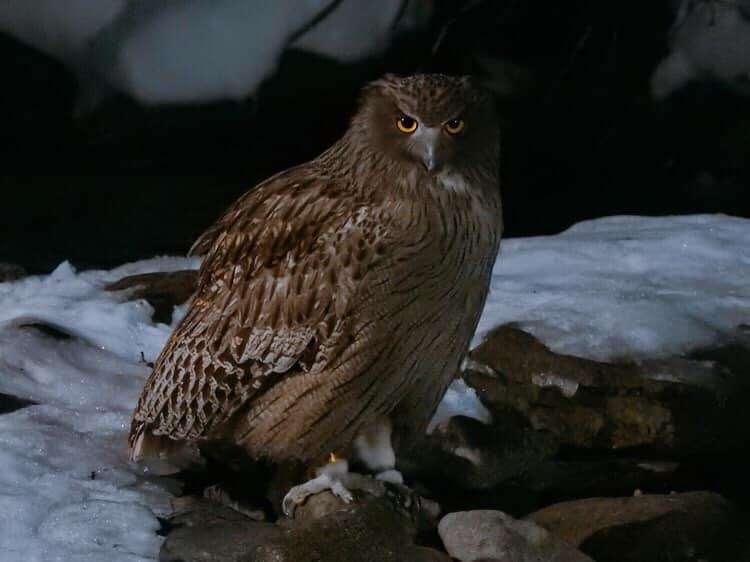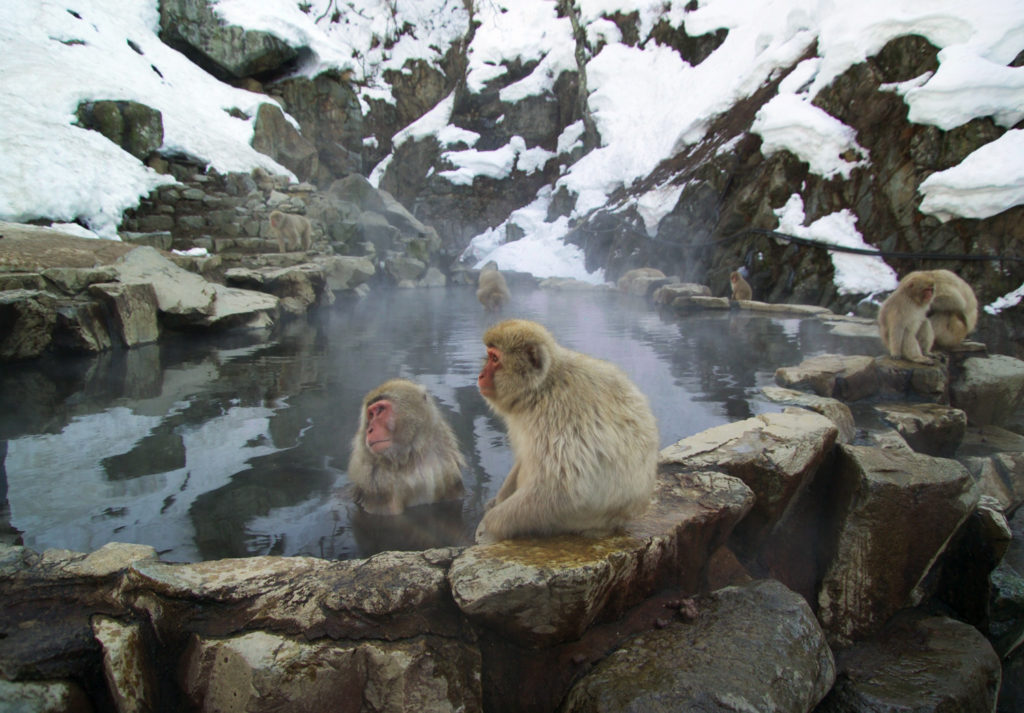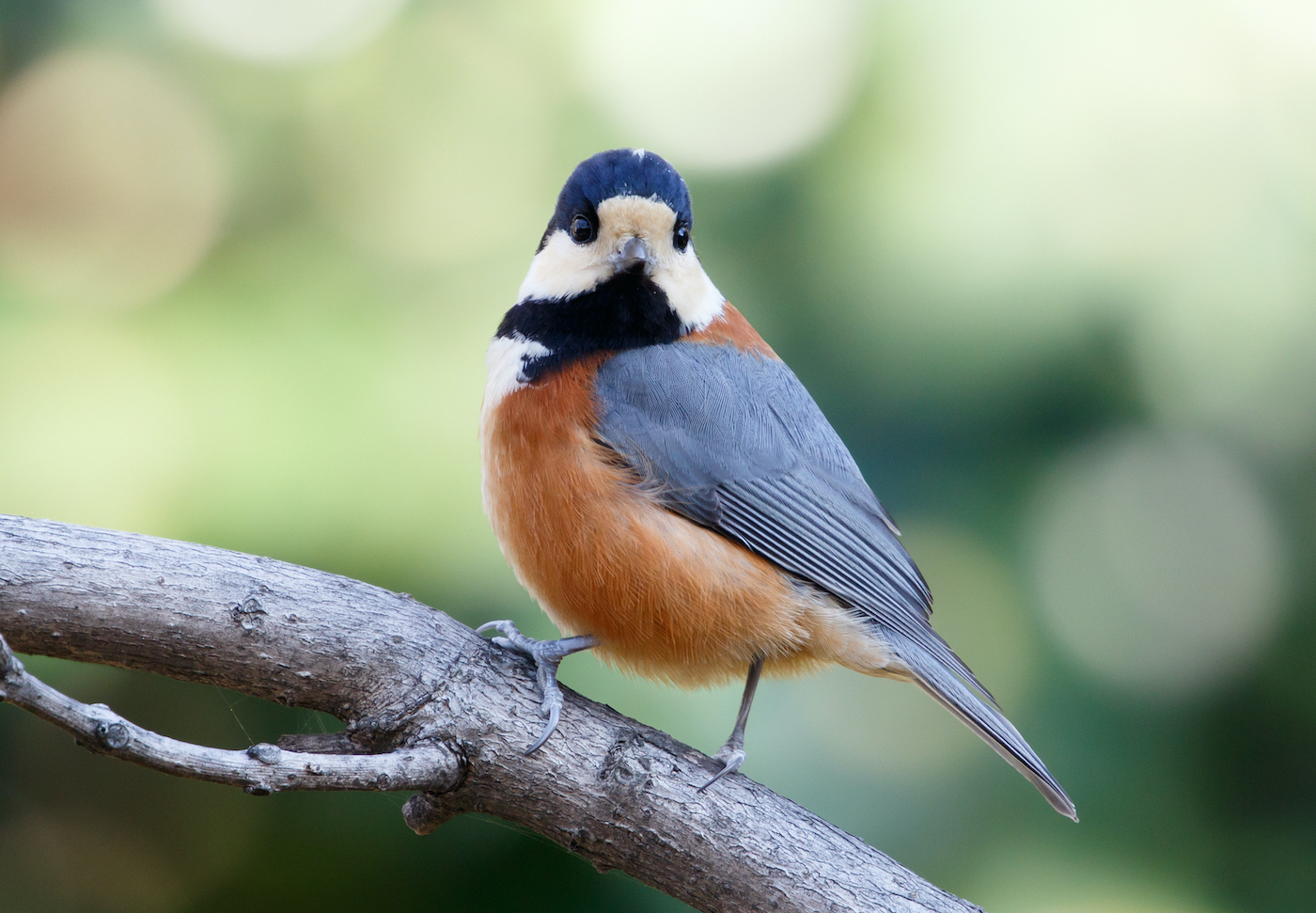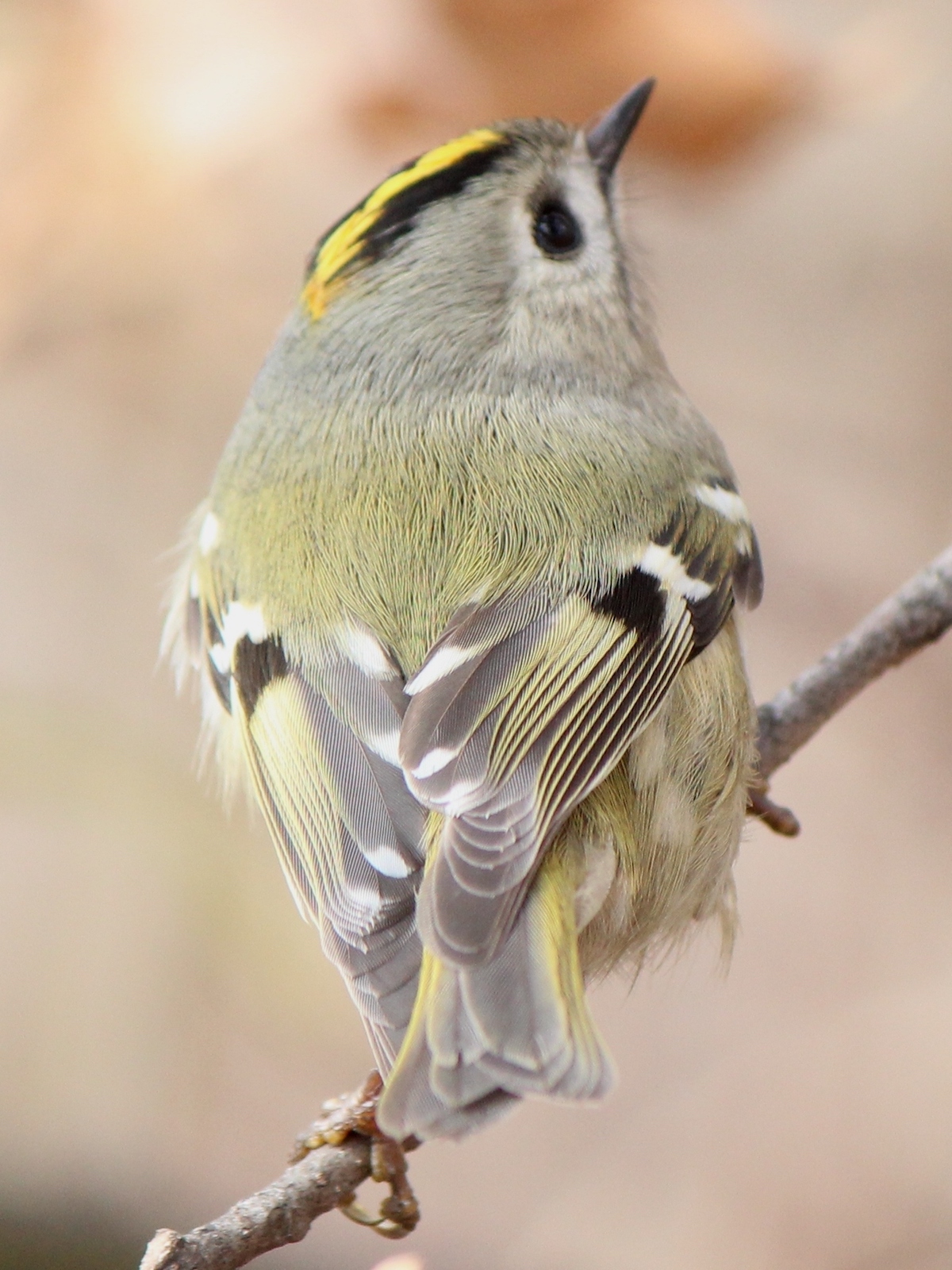Sunbirds are always among our guests’ favorite finds: small, colorful, and often showily iridescent birds that spend much of their time drinking nectar from flowers, adding a backdrop of botanical beauty to sunbird photos taken in the field.
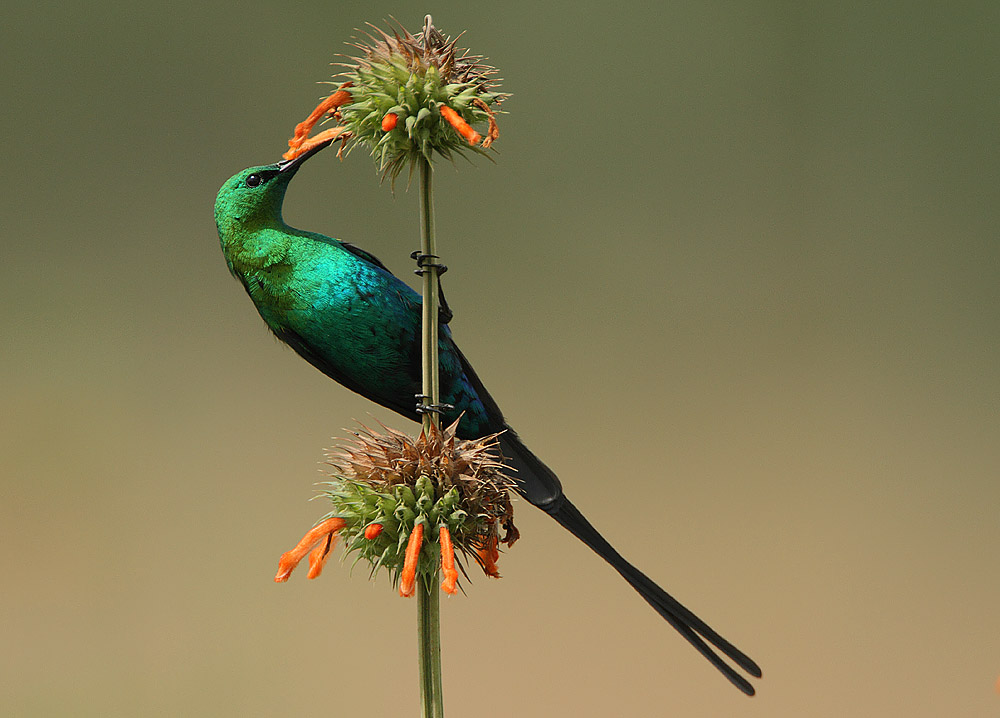
Though some sunbirds can hover, they usually perch to feed, but are otherwise so much like hummingbirds that scientists cite the two bird families as an example of “convergent evolution,” where unrelated organisms develop independently in different places to fill the same ecological niche.
It’s little wonder, then, that sunbirds are often called “Africa’s hummingbirds” or “Asia’s hummingbirds.” (Honeyeaters are Australia’s hummingbirds, another bird family that evolved independently in the nectar-drinking niche. Watch this space for a forthcoming honeyeater blog!) Yet another nectar-drinking group, the sugarbirds, were once classified as sunbirds but now have their own family, Promeropidae, restricted to South Africa, which is a fantastic place to see both families and their interaction with the southern cape’s unique fauna.
South Africa Birding & Wildlife Safari
Sept. 27 — Oct. 11 | $6,490 w/Mason Flint
We call South Africa a “Sampler” tour as it blends birding with botany, witnessing wildflowers of Cape Town’s famous fynbos region and a short “big-five” safari in legendary Kruger National Park. We often find 350 or more bird species in South Africa, which has modern infrastructure and great food and wine, making this a very comfortable as well as birdy journey!
Sunbirds, Hummingbirds & Honeyeaters
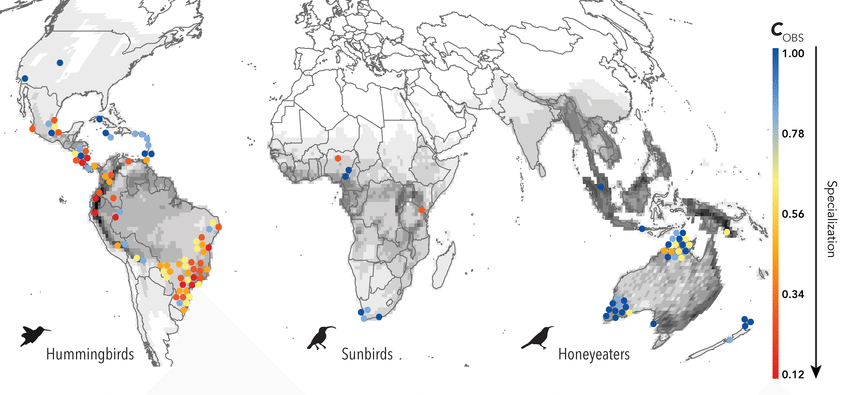
Sunbirds delight our guests on tours throughout sub-Saharan Africa, in Israel, and in Southeast Asia, just as hummingbirds do on many of our US, Mexico, Central America and South American tours.
Feeding Behavior
Like hummingbirds, many sunbirds sip nectar from flowers using their long, thin, tubular tongues. But they sometimes take a more aggressive approach, like flowerpiercers, using their sharp down-curved bills to poke holes at the base of less-accessible flowers to release their nectar, a behavior known as “robbing”.
Sunbirds also sometimes eat fruit, seeds, pollen and spiders, also a favorite of the spiderhunters. There are 13 spiderhunters among the 145 species in the bird family Nectariniidae. Spiderhunters are sunbirds’ larger, drabber relatives, forest species concentrated in Southeast Asia that we have chances for in Borneo, India, Bhutan, Thailand and Indonesia.
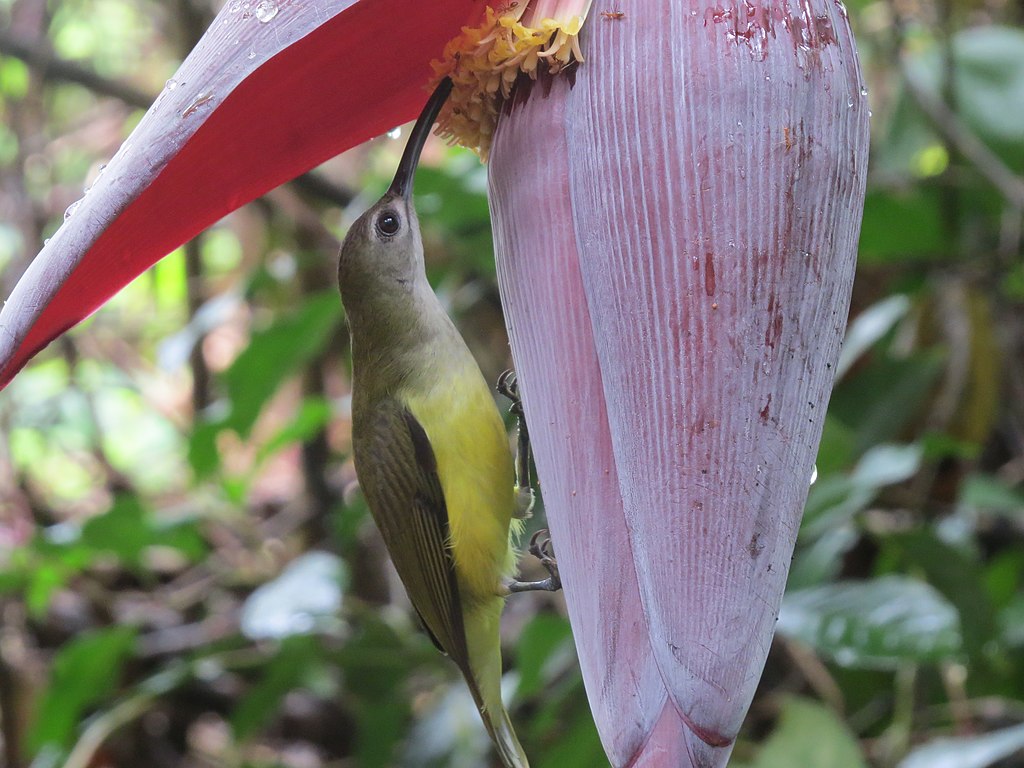
Co-Evolution with Mutualistic Flower Species
Sunbirds are important pollinators throughout their ranges of flowers that scientists say have evolved to be more attractive to them. Tubular flowers offer nectar in Africa as they do in the US to hummingbirds, but are much more likely to have a sturdy stalk to invite these perching birds. One remarkable example is the Babiana ringens, a South African flower that grows near the ground and shoots up a rat-tail like stalk that’s only function seems to be a perch for Malachite Sunbird, its most important pollinator. Sunbirds avoid the ground because of snakes and other predators and this flower stem without inflorescence gives them a more inviting perch.
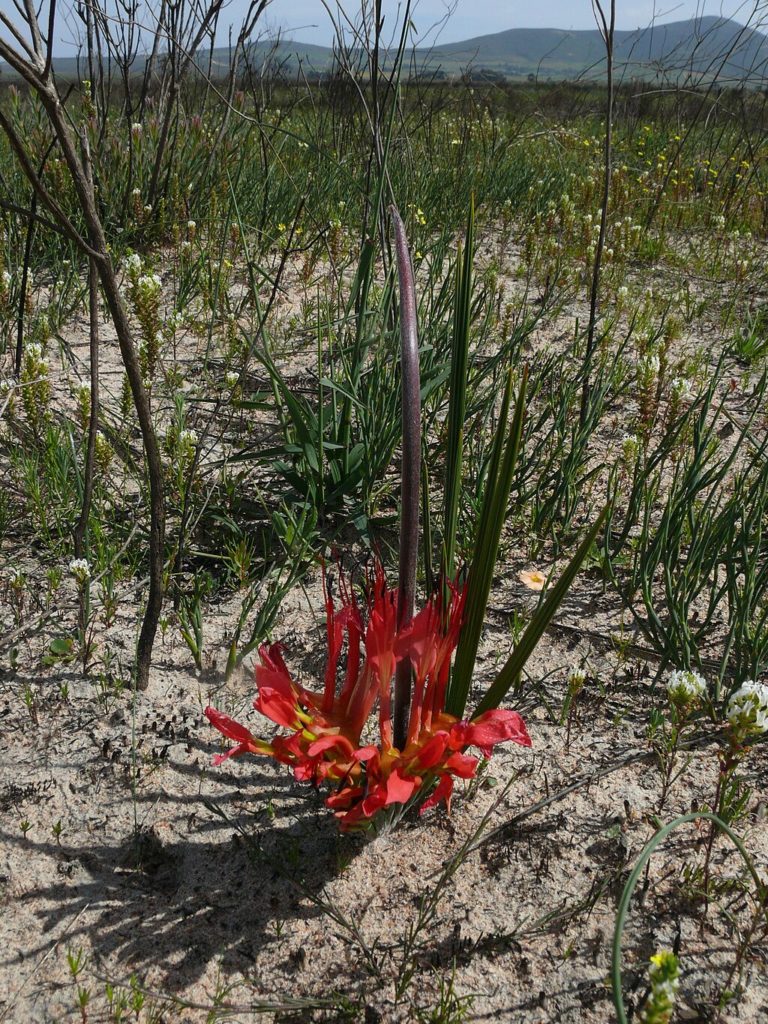
Other flowers, including proteas of the South African Fynbos biome, have evolved curved tubular flowers that are a lock-and-key match for sunbirds’ downcurved bills.

Males & Females
Sunbirds are strongly sexually dimorphic (again like hummingbirds) with larger males putting on a show to attract mates and defend territory, while females are relatively drab by comparison. After breeding, though, the males of some species molt into an “eclipse” plumage making them look more like females, and less conspicuous to predators.
Biggest & Smallest Sunbirds
Sunbirds are small, most between 4 and 8 inches in length, with short, rounded wings suitable to short-hop flights from floral perch to perch. Though some species do shift territories to optimize access to food, they tend not to be migratory. The smallest sunbird is the Tiny Sunbird, just under 4 inches and native to Subsaharan Africa, possible to see on our Ghana and Uganda tours. The largest sunbird is the Spectacled Spiderhunter, at 8.7 inches, a possible species on our Thailand and Borneo tours.
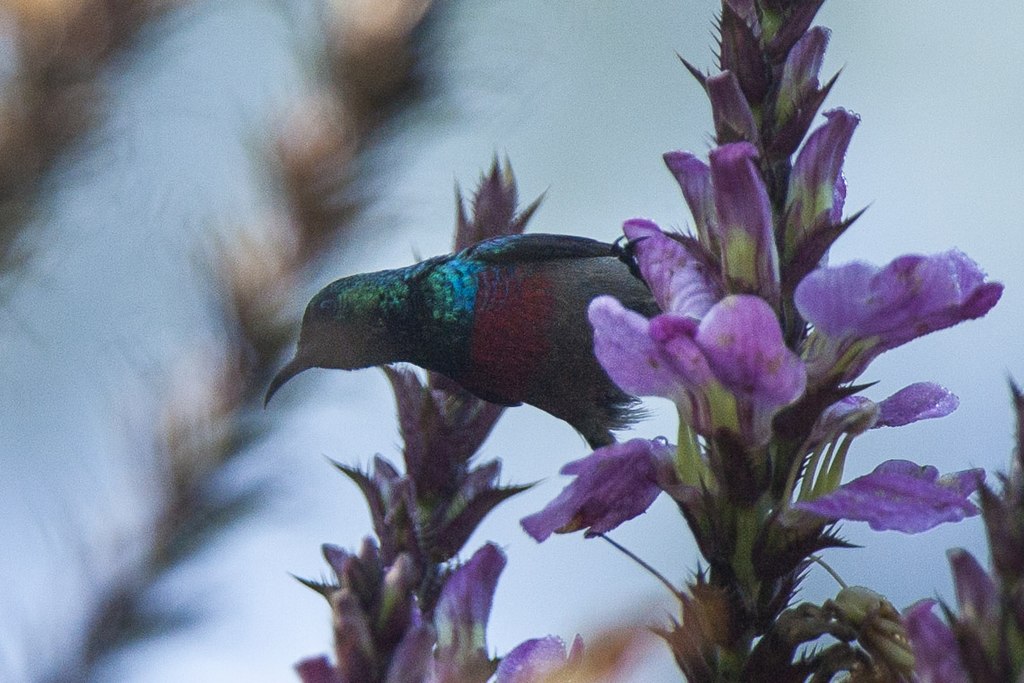
Most Widespread & Endemic Sunbirds
The most widespread sunbird in Asia is the Olive-backed Sunbird, which ranges from southern China to Queensland, Australia. There are many endemic sunbirds, too, particularly in Africa, which is home to the highest number of species. There are five endemic sunbirds in Tanzania, which has the most species of any country, with 51! In South Africa, endemic Orange-breasted Sunbird is an important pollinator for its unique Fynbos flora, predominantly feeding on Erica and Protea species.
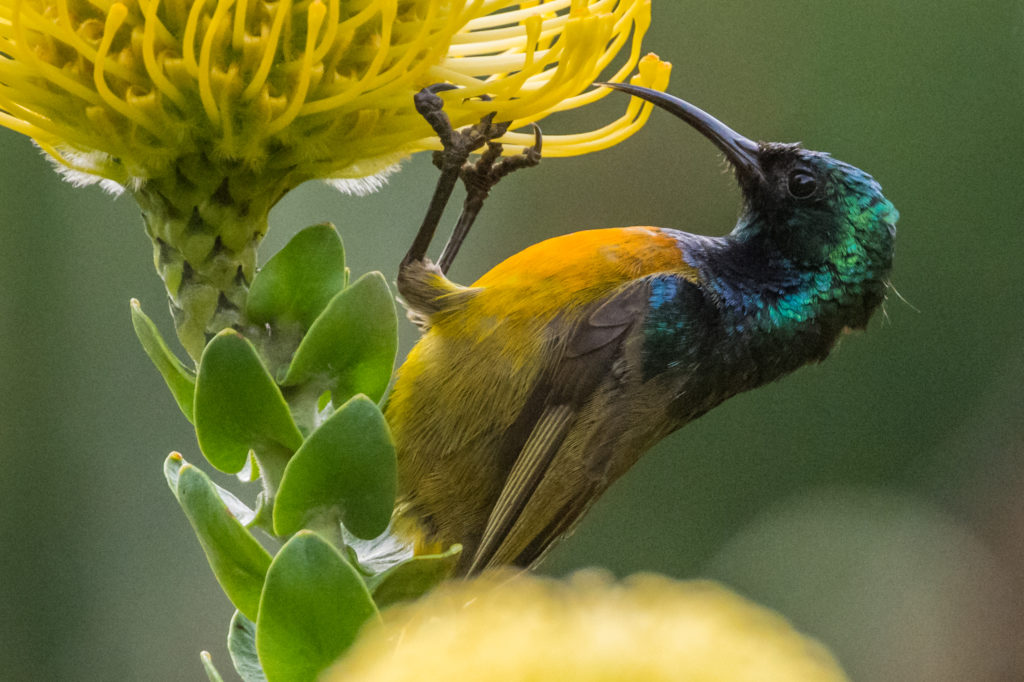
Mating & Nesting Behavior
The males of several sunbird species have elongated tails, which scientists say helps them find mates earlier in the breeding season, though females may later regret falling for the flash. Longer tails make it harder for males to maneuver and hawk insects, handicapping them in their co-parenting duties. Both sunbirds and spiderhunters create suspended-pouch nests, a task undertaken by the females, who also incubate the eggs alone.
See Sunbirds for Yourself!

Naturalist Journeys Tours with Sunbird Chances
Africa Tours
Tanzania, 51 sunbirds
Uganda, 38 sunbirds
Kenya, 37 sunbirds
Ghana, 23 sunbirds
South Africa, 16 sunbirds
Namibia, 13 sunbirds
Botswana, 8 sunbirds
Madagascar, 2 sunbirds
Asia Tours
Thailand, 14 sunbirds, 8 spiderhunters
Indonesia, 13 sunbirds, 10 spiderhunters
India, 13 sunbirds, 2 spiderhunters
Borneo, 9 sunbirds, 10 spiderhunters
Bhutan, 7 sunbirds, 2 spiderhunters
Taiwan, 3 species
Australasia & Oceania Tours
Papua New Guinea, 2 sunbirds
Australia, 1 sunbird
More Africa Tour Info:
One Spot Left: Southern Tanzania: Wildlife & Birding Safari
September 22 – October 5, 2023 | $10,970 w/Peg Abbott
Peg Abbott designed and leads this tour exploring Tanzania’s wildest and least-traveled terrain, a stronghold for African wildlife species, including predators. A coastal park on the Indian Ocean and isolated mountain ranges with unique flora and fauna add to this special safari’s diversity!
Uganda Highlights: Fabulous Birds & Mammals
November 22 – December 5, 2023 | $6790 w/Andrea Molina & Peg Abbott
Birding in a rich mix of habitats is at the heart of our November tour to Uganda, from the shores of Lake Victoria to the Mabamba Swamp (for Shoebill!) to lush forests skirting the beautiful Virunga Volcanoes. We have chances to see a great mix of birds and mammals, including Chimpanzees and the opportunity, for those who can hike, to see endangered Mountain Gorilla. Uganda’s forests trace the spine of the continent, and we delight in exploring them! We also visit Murchison Falls National Park, where we experience the classic savanna and safari.
One Room Left: Wild West Africa: Ghana Birding Safari (Pairs with Southern Tanzania)
October 7 – 24, 2023 | $6,390 w/Peg Abbott
Brighten your days in a country known for warm hospitality, colorful culture and colorful birds! Travel with Peg to the tropical rainforests of Ghana to experience an exhilarating mix of African birds and mammals. Professional guides committed to conservation show off Ghana’s diverse mix of West African bird specialties, iconic wetland species and classic African wildlife.

